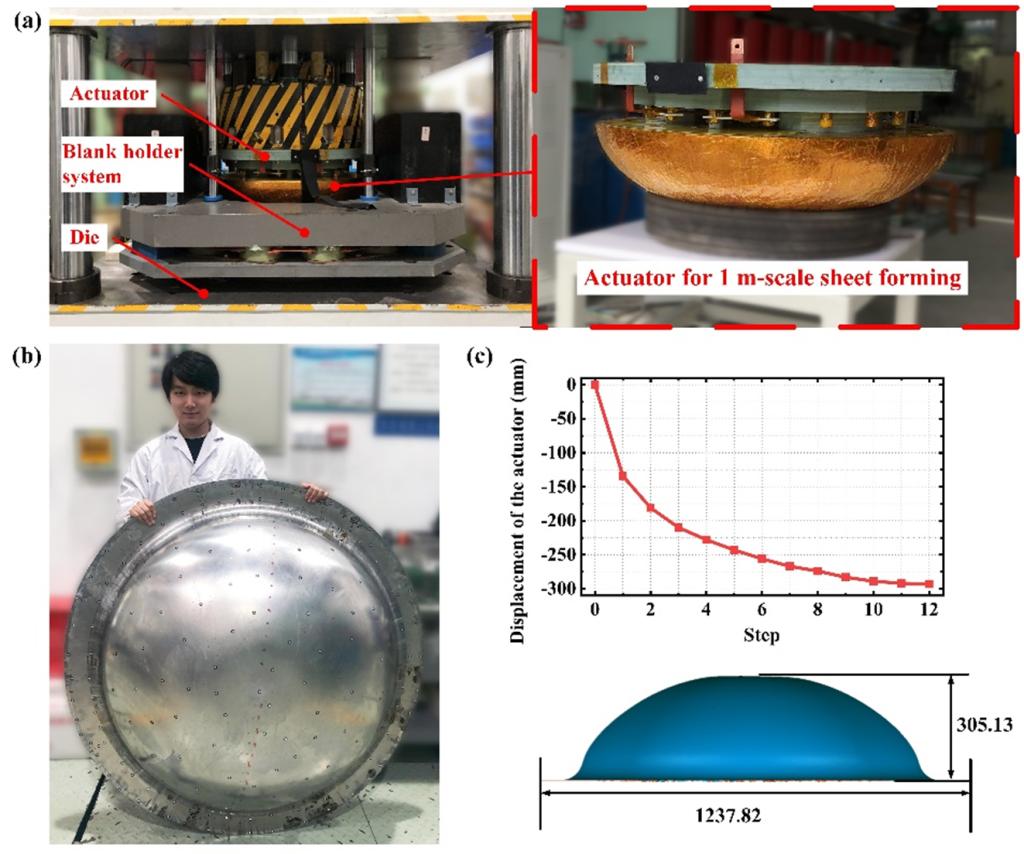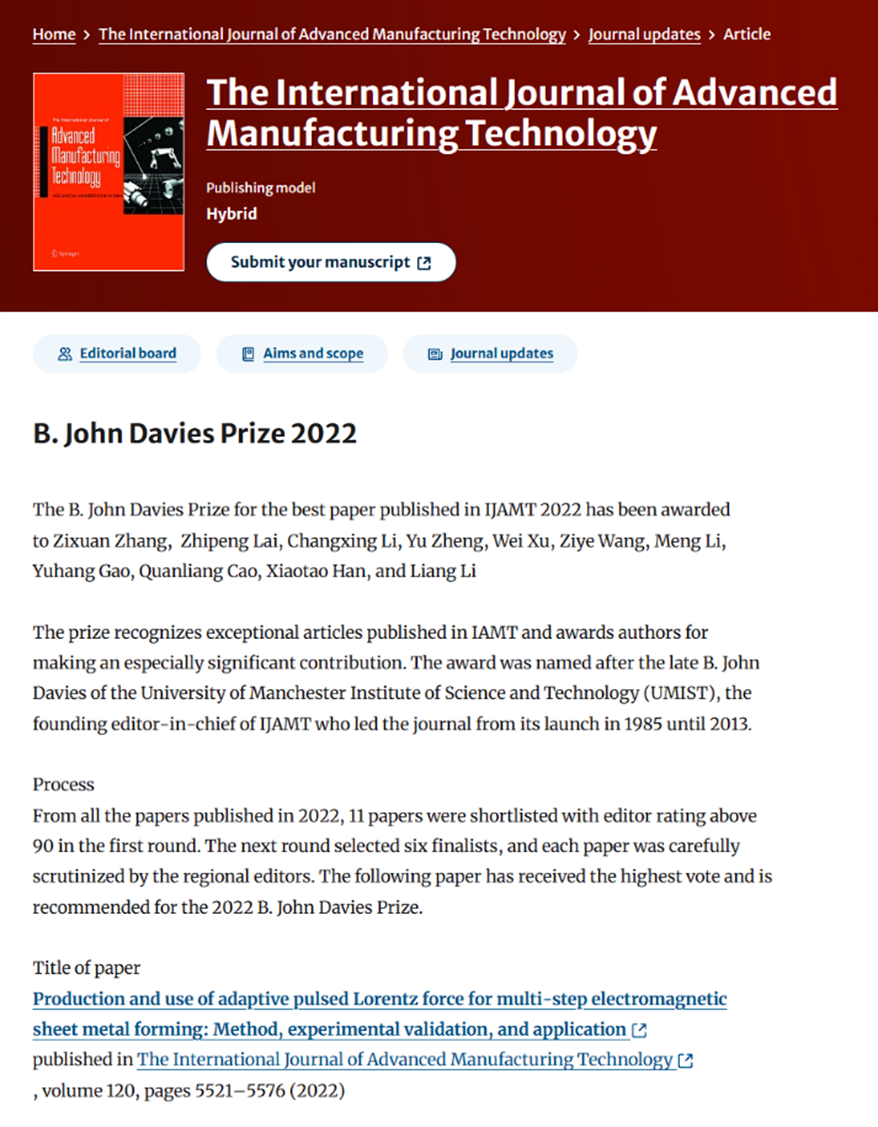Recently, the paper "Production and use of adaptive pulsed Lorentz force for multi-step electromagnetic sheet metal forming: Method, experimental validation and application" by Professor Liang Li and Associate Professor Zhipeng Lai's team from the Wuhan National Pulsed High Magnetic Field Center was awarded the 2022 B. John Davies Prize for The Best Paper by The International Journal of Advanced Manufacturing Technology (IJAMT). The first author of the paper is Zixuan Zhang, a doctoral student at the center, with Professor Liang Li and Associate Professor Zhipeng Lai serving as the co-corresponding authors.

Figure 1: (a) Schematic diagram of the novel actuator proposed in the paper and (b) flowchart of the multi-step electromagnetic sheet metal forming process.
The electromagnetic forming process studied in the paper is an important engineering application of pulsed high magnetic field technology. As a common high-velocity forming process, it offers advantages such as improving the material forming limit and suppressing springback and wrinkling in workpieces. It is suitable for forming lightweight alloys, such as aluminum alloys, and has broad application prospects in lightweight manufacturing fields such as aerospace. The paper addresses the limitations in forming capacity and forming quality control in conventional electromagnetic forming processes for shell components. It proposes a novel electromagnetic actuator capable of generating adaptive pulsed Lorentz forces to achieve an efficient and flexible multi-step electromagnetic forming process. The novel actuator, by incorporating a specially designed field shaper component, ensures consistent electromagnetic coupling between the actuator and workpiece throughout the multi-step forming process and adaptively adjusts the distribution of pulsed Lorentz forces according to the stepwise changing contours of the workpiece, meeting different deformation requirements at different forming stages. The novel multi-step small energy discharge approach, as opposed to the conventional single large energy discharge, breaks through the forming capacity limits of conventional single-step forming and effectively reduces the difficulty of controlling the dynamic forming process by replacing large single deformations with multiple small ones.

Figure 2: Successful application of the novel process in a large-scale electromagnetic forming project: (a) A meter-level large-scale multi-step electromagnetic forming platform; (b) A picture of the AA2219 formed part; (c) Geometric morphology scanning results of the formed part.
The feasibility and advantages of the proposed process are validated through a combination of comparative experiments and numerical simulations. The results show that the electromagnetic multi-step process can effectively overcome the two major limitations of forming capacity and forming quality control in conventional electromagnetic shell forming processes. For forming capacity, the novel process can achieve forming tasks that conventional electromagnetic single-step forming processes cannot, especially for workpieces with relatively high mechanical strength. In terms of forming quality control, the novel process can significantly reduce or even eliminate forming defects such as wrinkling and springback through a multi-step forming process, greatly improving die-fitting accuracy. Based on the conclusions drawn from the validation experiments, the novel process was successfully applied to a large-scale electromagnetic forming project from the center, achieving the forming of an AA2219 aluminum alloy thin-walled shell component with a diameter of 1000 mm and a thickness of 6 mm. Compared to similar manufacturing cases previously undertaken by the team, the new process required only 25% of the previous electrical power capacity and could complete forming tasks for larger thickness and higher strength workpieces, demonstrating tremendous potential in the direction of large-scale thin-walled shell component forming.

Figure 3: Announcement page of the 2022 Best Paper Award in the official website of IJAMT.
IJAMT is an international journal published by Springer and indexed by SCI. The papers published in this journal primarily focus on the practical applications of advanced manufacturing technologies and systems, covering a wide range of fields including robotics, mechatronics, as well as sustainable and green manufacturing. The B. John Davies Best Paper Prize is established in memory of Professor B. John Davies, the founding editor-in-chief of the journal, and only one paper is selected annually. In the selection of the best paper for 2022, the paper by the team of Liang Li and Zhipeng Lai stood out from all the papers published that year, being elected as the best paper of the year with the highest votes and receiving a prize of $5,000.
